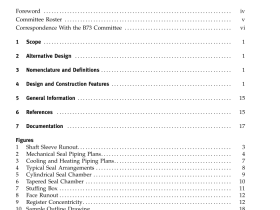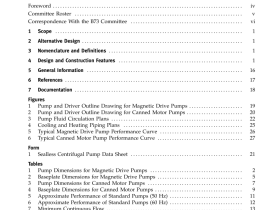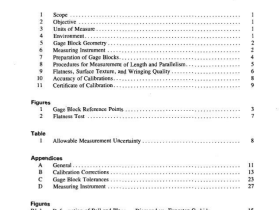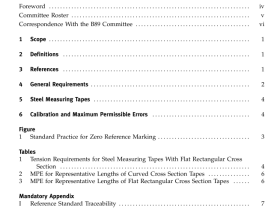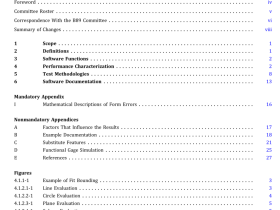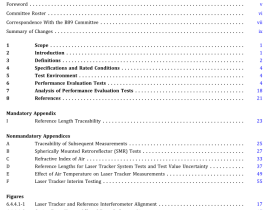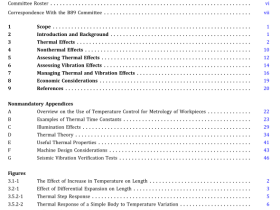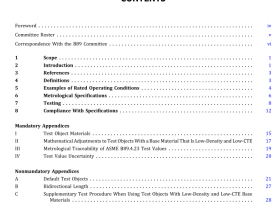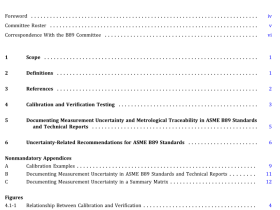ASME B30-26 pdf download
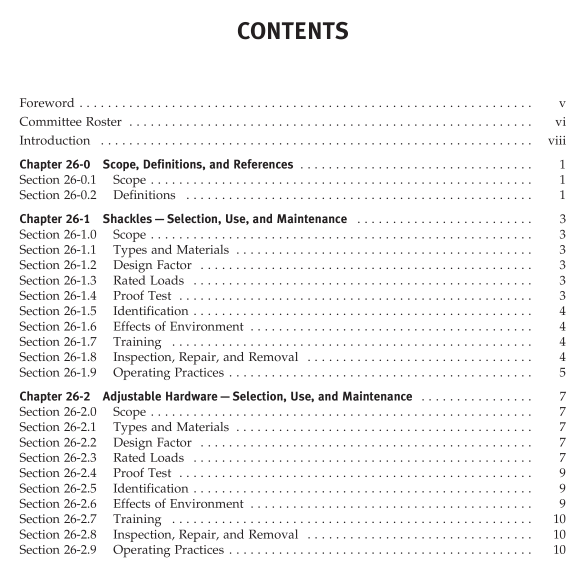
ASME B30-26 pdf download Rigging Hardware Safety Standard for Cableways, Cranes, Derricks, Hoists, Hooks, Jacks, and Slings
SECTION 26-0.1: SCOPE
Volume B30.26 includes provisions that apply to the construction, installation, operation, inspection, and maintenance of detachable rigging hardware used for lifting purposes in conjunction with equipment described in othevolumes of the B30 Standard. This hardware includesshackles, links, rings, swivels, turnbuckles, eyebolts, hoistrings, wire rope clips, wedge sockets, and rigging blocksUse of the same hardware for purposes other than liftingis excluded from the provisions of this Volume.
SECTION 26-0.2: DEFINITIONS
abnormal operating conditions: environmental conditionsthat are unfavorable, harmful, or detrimental to or forthe operation of a piece of detachable hardware, suchas excessively high or low ambient temperatures; exposure to weather; corrosive fumes; dust laden or moisture laden atmospheres; and hazardous locations.
angle of loading: the acute angle between horizontal andthe leg of the rigging, often referred to as the horizontal angle.
bow, shackle: the curved portion of the shackle body opposite the pin, often referred to as the bail, the body, thedee, or the bowl (see Fig. 3).
dead end: the section of wire rope that is not tensionedunder load (see Figs. 10 and 11).
design factor: ratio between nominal or minimum breaking strength and rated load of the rigging hardware.
designated person: a person who is selected or assignedby the employer or employer’s representative as beingcompetent to perform specific duties.
ears, shackle: portion of the shackle body which supportsthe shackle pin (see Fig. 3).
hardware service:
normal: service that involves use of loads at or belowthe rated load.
severe: service that involves normal service coupledwith abnormal rigging or operating conditions.
special: service that involves operation, other than normal or severe, which is approved by a qualified personhitch, choker: a method of rigging a sling in which thesling is passed around the load, then through one loopeye, end fitting, or other device with the other loop eyeor end fitting attached to the lifting device.
in-line loading: condition where the load is appliedthrough the centerline of the rigging hardware at the intended bearing points.
jaw: a U-shaped load bearing connection, designed foruse with a removable pin (see Fig.5).
line pull: the tension load in a rope entering a riggingblock (see Fig.17).
live end: the section of wire rope that is tensioned underload. (see Figs. 10 and 11).
manufacturer: The entity responsible for the physicaproduction of an item.
pin, shackle: a steel bolt made to span the two shackleears (see Fig.3).
printary load fifting: the fitting on a rigging block that carries the highest applied load during use (see Fig. 17).
proof load: the specific load applied in performance ofthe proof tests
proof test: a nondestructive load test made to a specificmultiple of the rated load of the rigging hardware.
qualified person: a person who, by possession of a recognized degree in an applicable field or certificate of professional standing,or who,by extensive knowledgetraining, and experience, has successfully demonstratedthe ability to solve or resolve problems relating to thesubject matter and work.
rated capacity: refer to rated load.
rated load: the maximum allowable working load estabished by the rigging hardware manufacturer. The terms”rated capacity” and “working load limit” are commonly used to describe rated load.
saddle: the base of a wire rope clip (see Fig. 10).
